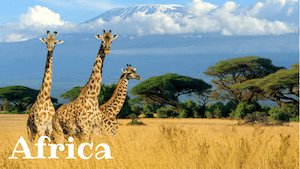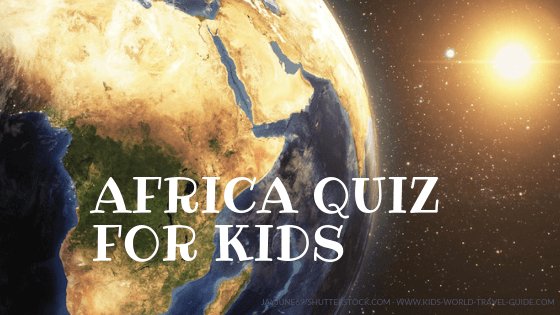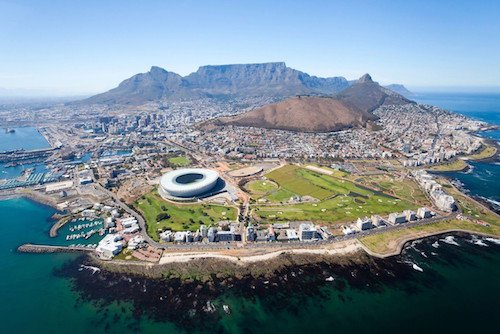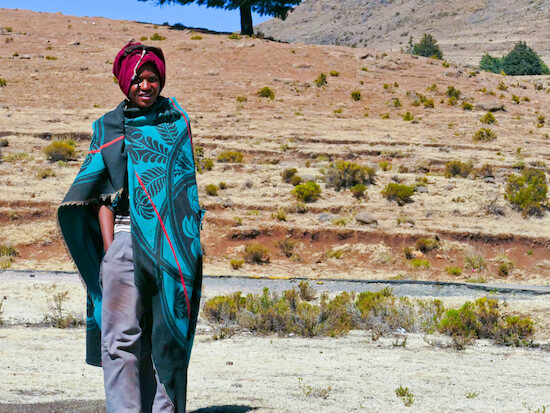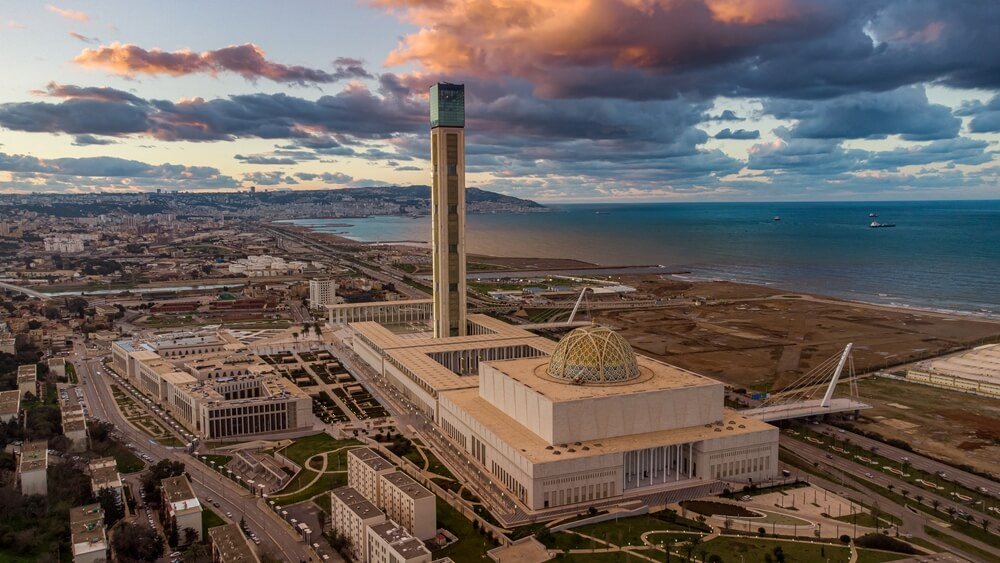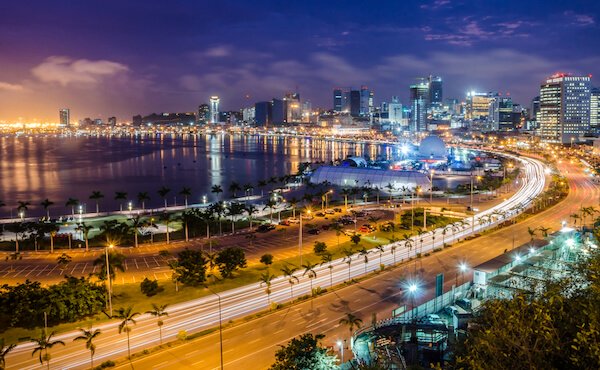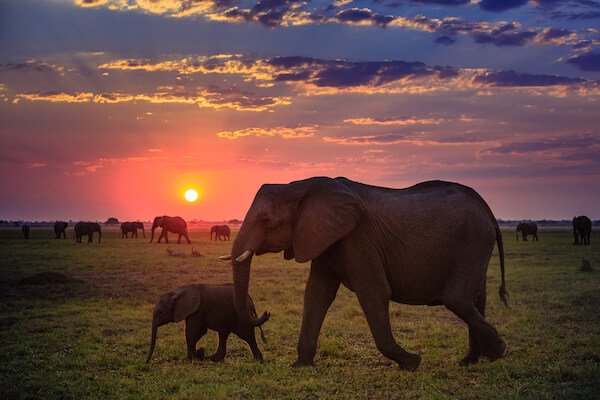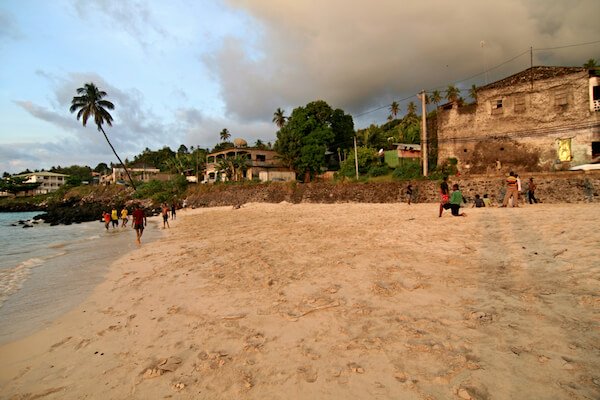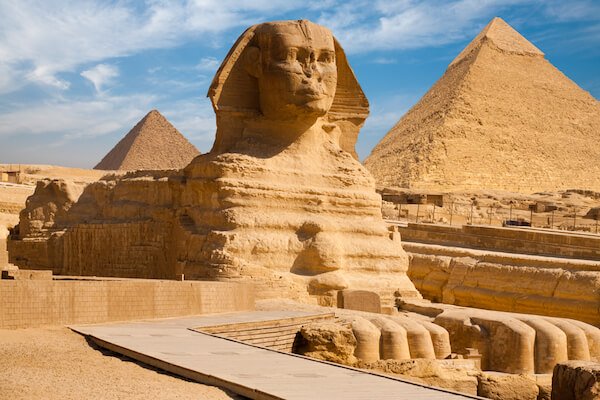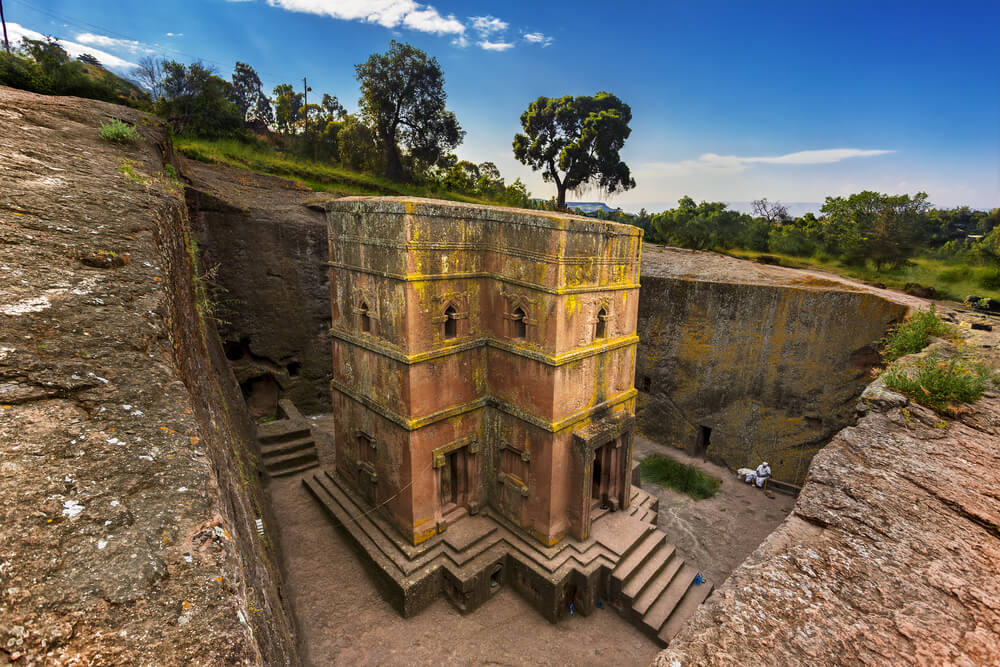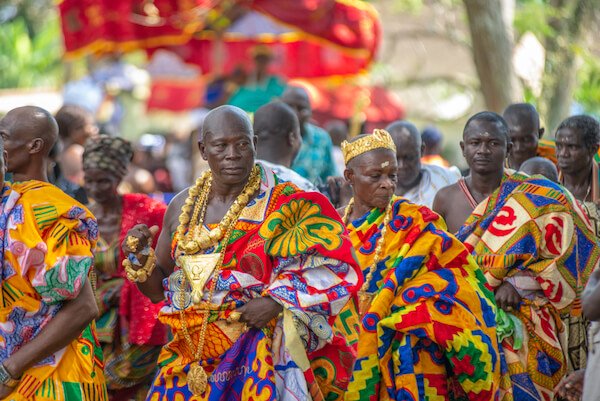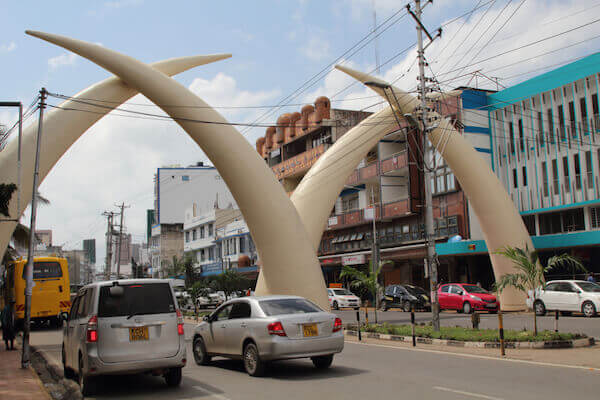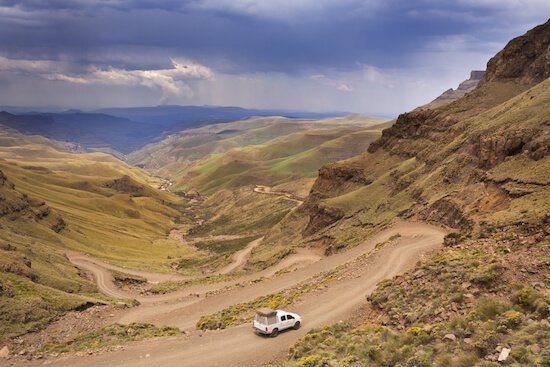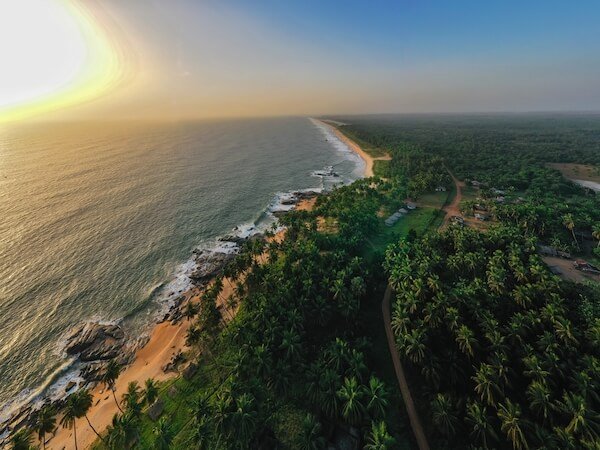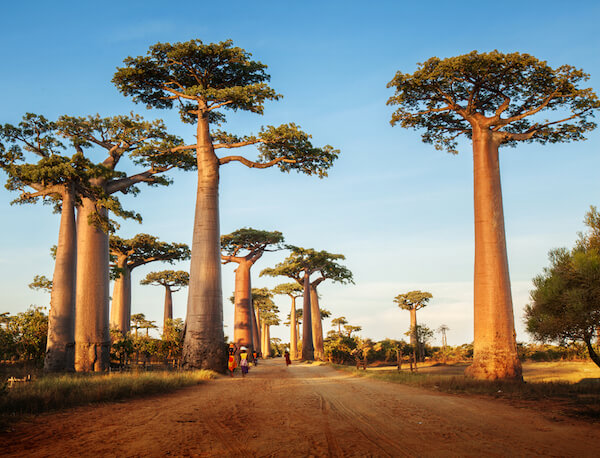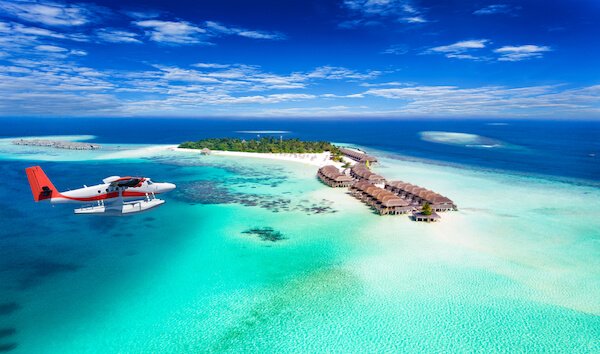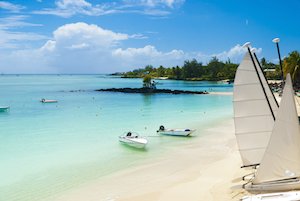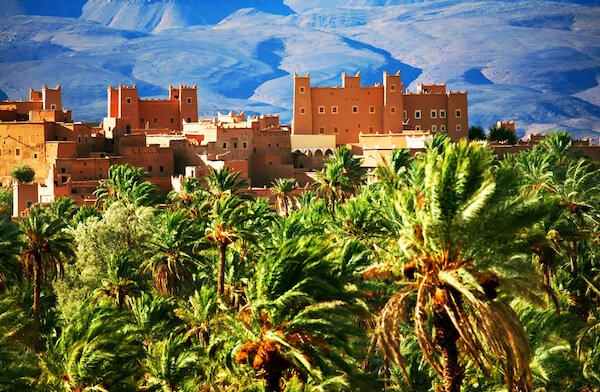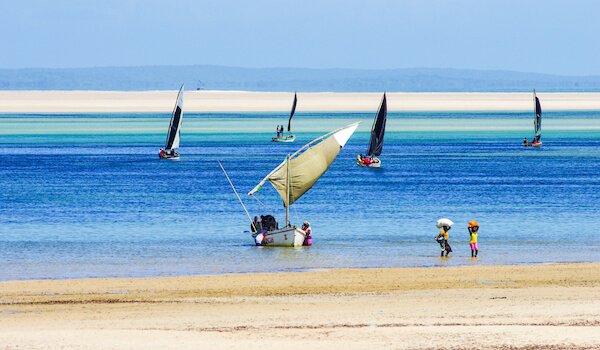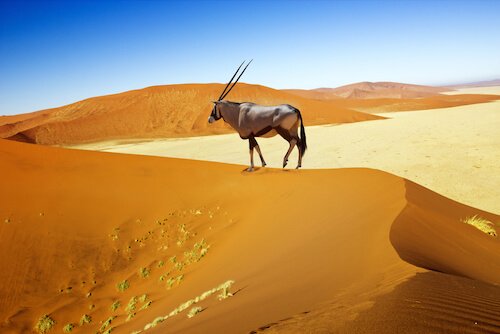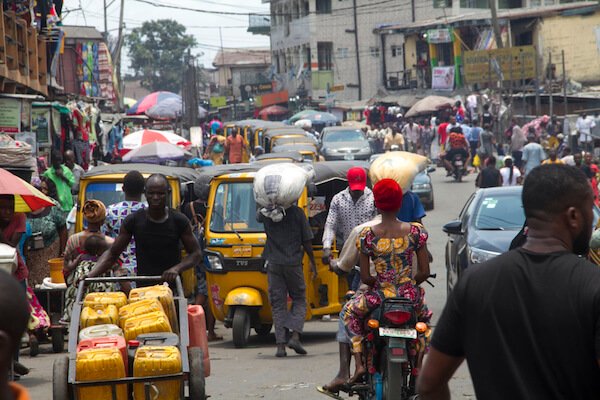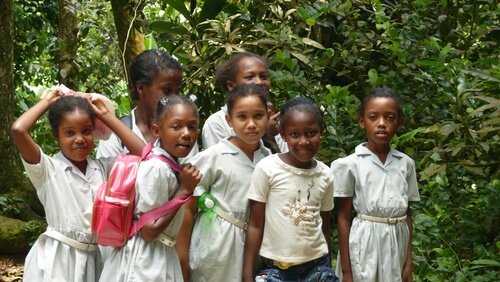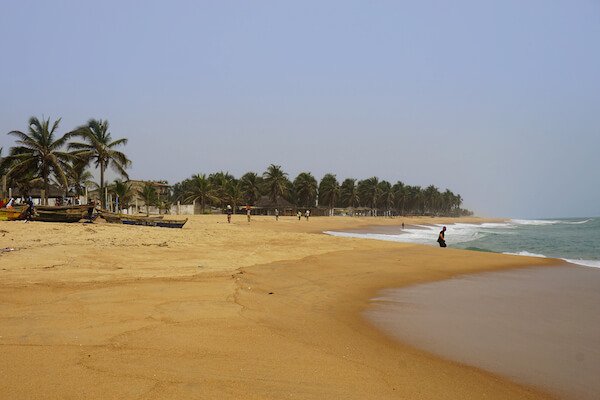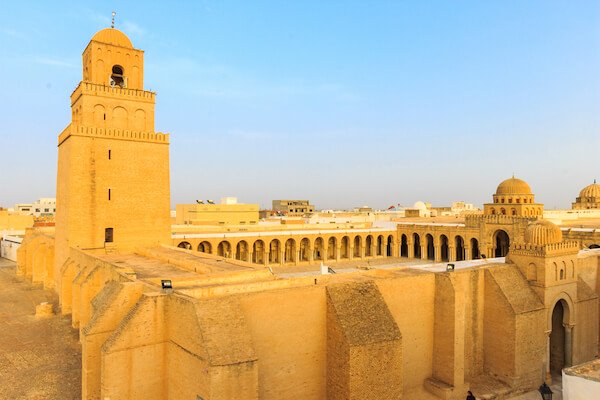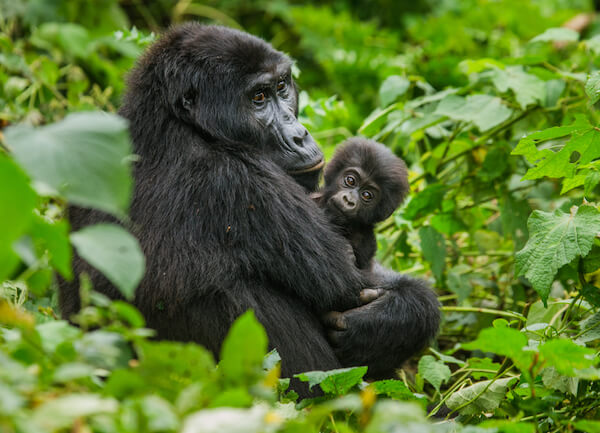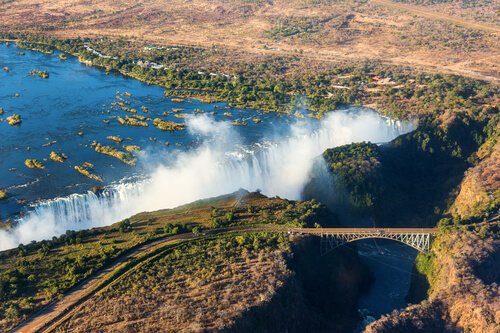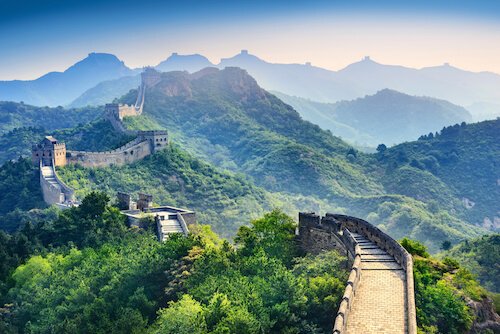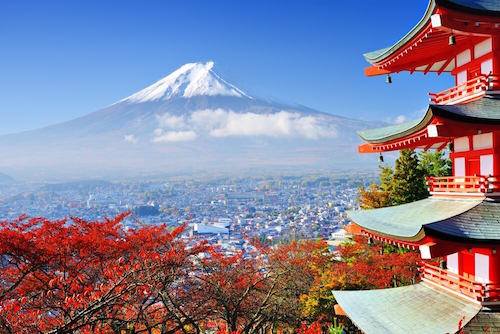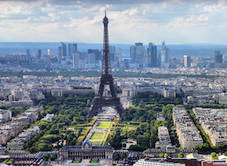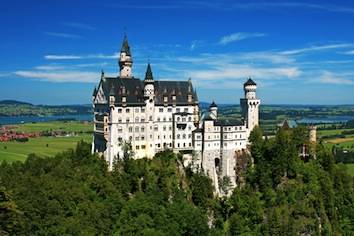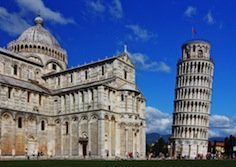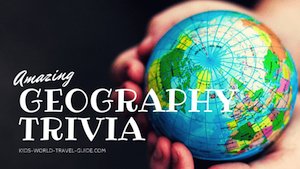Eswatini Facts
Here are some interesting Eswatini facts which were chosen and researched by kids especially for kids.
Eswatini Facts for Kids
- Population: 1.2 million people (2024)
- Capital: Mbabane with 95,000 inhabitants
- Name: Kingdom of Eswatini. Until 2018 the country was referred to as Swaziland
- King: King Mswati III rules the country since 1986
- Motto: 'We are the Fortress'
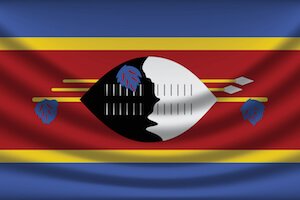 Flag of Eswatini
Flag of Eswatini- Government: Absolute monarchy
- Language: siSwati and English
- Religion: mainly Christian
- Life expectancy: 59 years
- Literacy: 88% of the people over 15 years can read and write
- Currency: 1 Swazi lilangeni = 100 cents
- National Day: 6 September (Independence Day)
- National Symbols: lion (representing the King) and the elephant (representing the Queen Mother)
- National Anthem: 'O Lord is our God, Eswatini' is sung in Siswati.
- History: Eswatini, then called Swaziland, gained independence from the United Kingdom in 1968.
Eswatini Geography
Eswatini is the second smallest country in continental Africa. Only The Gambia and some African islands are smaller.
Eswatini is a landlocked country and does not have any border with an ocean. The two countries that enclose Eswatini are Mozambique to the East and South Africa which surrounds the country to North, West and South. The country has two capital cities, Lobamba and Mbabane, but the official capital city is Mbabane. Both cities are located in the country's northwest.
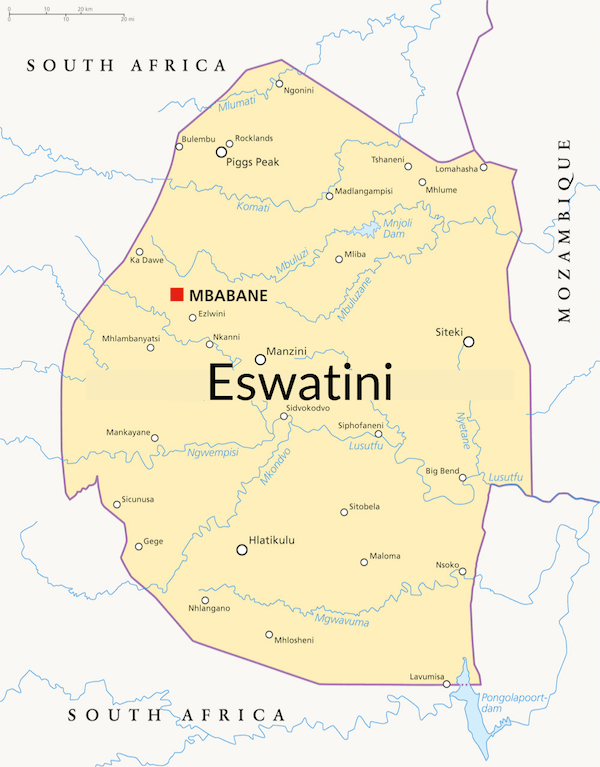 Eswatini map
Eswatini mapEswatini is slightly smaller than the state of New Jersey/ USA or slightly smaller than Kuwait.
There is an international airport in the capital city Mbabane. A flight from Mbabane to O.R. Tambo international airport in Johannesburg in South Africa takes about 50 minutes.
Eswatini Facts | Eswatini Geography
Eswatini lies on a high plateau and has higher mountains and hills in 'high veld' in the northwest as well as rolling hills.
The Ezulwini Valley near Mbabane is referred to as the "Royal Valley" as there is the royal palace and the seat of parliament in Lobamba. Ezulwini means 'Place of Heaven'. In fact, Lobamba is the second capital as Mbabane is only the seat of the administration of the country.
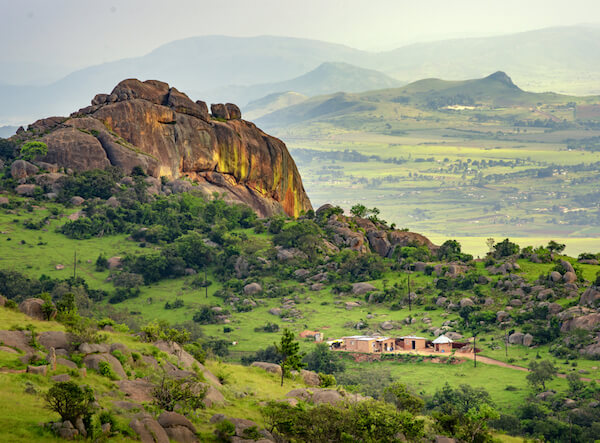 Ezulwini Valley
Ezulwini ValleyTo the eastern border, there are the rugged and volcanic Lebombo mountains at the border to Mozambique. The eastern regions, however, are mainly covered by dry bush veld.
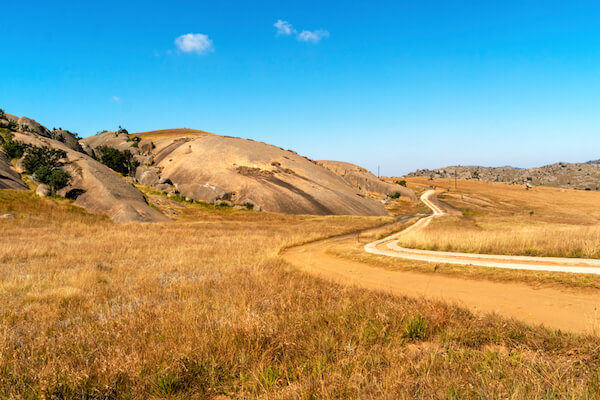 Bushveld in Eswatini
Bushveld in Eswatini- The country has mostly a tropical climate, but the higher areas are more temperate, and the eastern border is drier and hotter.
- Eswatini's highest point is Emlembe with 1,862 m/ 6,109 ft. The mountain is part of the Drakensberg Range and located at the border to South Africa.
Eswatini Attractions and Landmarks
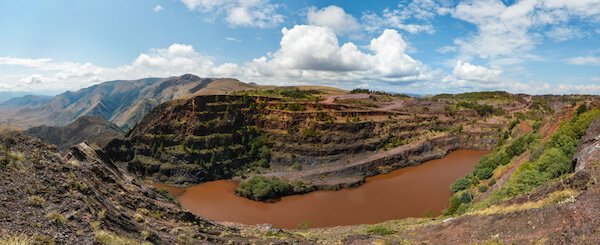 Ngwenya mine in Eswatini
Ngwenya mine in Eswatini- The oldest mine in the world is located in Eswatini. The Ngwenya mine was already started by bushmen ore than 43,000 years ago. The bushmen looked and excavated pieces of iron ore they used then for extracting colour to smear people and objects. The black pigments were used for warding of evil and the red ochre was used to signify purity. In siSwati, ngwenya means crocodile.
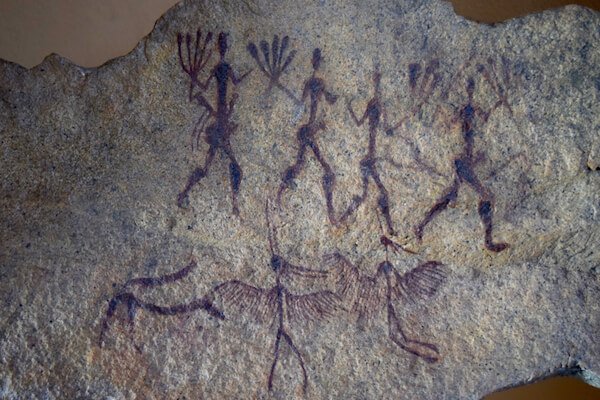 Bushmen paintings in Eswatini
Bushmen paintings in EswatiniSibebe Rock is the largest granite dome in the world. The massive volcanic rock is over 3 billion years old and is over 800 m/ 3,000 ft high. You can climb on it to admire the panoramic views.
The Ezulwini Craft Market is the largest market in the country with over 1,200 stalls where you can find anything. From textiles and wooden carvings to traditional garments and beadwork.
Eswatini Facts | emaSwati People
The emaSwati, also often referred to as Swazi people, live mainly in rural areas in the valleys and plains. Manzini is the kingdom's busiest city.
Unemployment is high in Eswatini and thus poverty is a major challenge. More than half pf the population live below the poverty line.
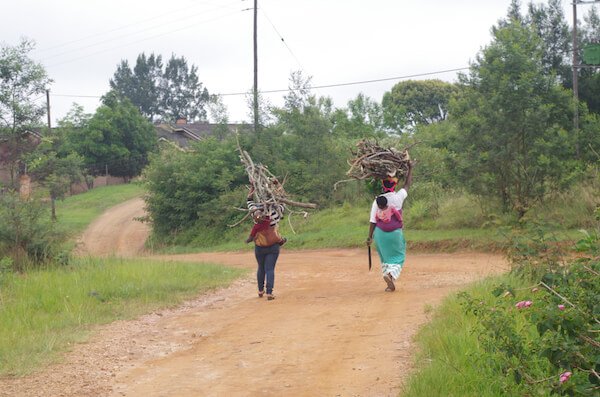 Carrying fire wood home
Carrying fire wood homeEswatini has the fifth highest youth unemployment rate in the world. 47% of the young people between 15 and 24 years are unemployed. Many emaSwati emigrated as the industry and mining sector downsized in the last ten years.
Most emaSwati are Christians (90%) with the majority of them being Zionists which is a mix of indigenous worship of ancestors and Christian belief.
The Reed Dance is a major event in the Swati culture. Then young girls and women travel from all over the country to attend the annual ceremony in front of the King. Reed more here.
 Reed Dance - image von Vera NewSib
Reed Dance - image von Vera NewSib52% of the population are 24 years and younger, with more than one third of the people being under 14 years of age! The health sector is lacking doctors and nurses with only 3 doctors per 10,000 people!
Eswatini has the world’s highest HIV/AIDS prevalence rate with almost one third of all adults having the disease.
Here a lovely insight into the cultural traditions of the country.
SiSwati and English are the official languages in Eswatini, siSwati is closely related to isiZulu. The siSwati language has three click sounds that you might find difficult to pronounce if you are not used to them.
Languages in Eswatini
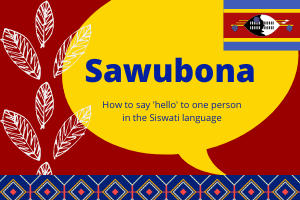
- 'k' is generally pronounced as a hard 'g'
- 'c' is pronounced with clicking your tongue against your front teeth
- 'hl' is pronounced with clicking your tongue against the palate, similarly as the 'll' is pronounced in the Welsh language.
Here four easy words (without click sounds) to remember:
- sawubona - hello (greeting one person)
- sanibonani - hello (greeting two or more people)
- yebo - yes, good day (as response in a greeting)
- kulungile - it's ok
Eswatini Facts | Eswatini Economy
The natural resources of Eswatini are coal, clay, talc, cassiterite, some gold and diamonds
The main agricultural products are sugar cane, maize and tropical fruits such as oranges, grape fruit and bananas. The tropical marula fruit is grown here too. Agricultural land accounts for 68% of the land area, most of it are pastures.
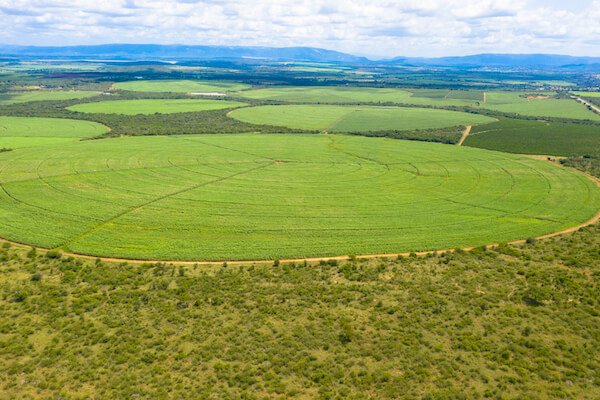 Eswatini sugar cane field
Eswatini sugar cane fieldAbout 60 % of the energy in the country is produced by renewal energy sources such as hydropower, Eswatini is ranking fifth in the world for producing renewal energy as the main energy resource!
The main trading partner is South Africa. Also the eSwati currency is pegged to the South African rand.
Eswatini Animals
The Southern African country has a rich wildlife. Here you can encounter many species of mammals, from elephants to hippos and giraffes. Eswatini is also home to the 'Big Five'.
There are many different species of antelopes such as the blesbok you see below.
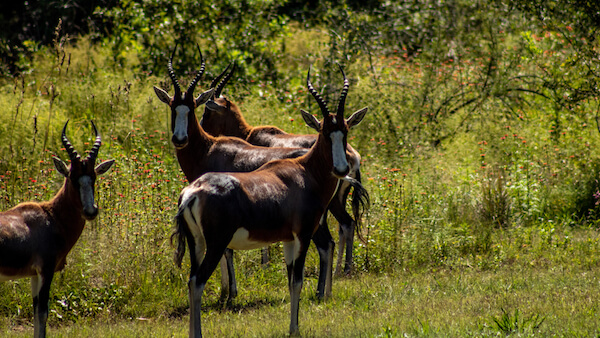 Blesbok
BlesbokBirding is a popular past activity with visitors. There are more than 500 species of birds in this tiny country, and this is as many species as for example France, a much larger country, hosts.
Eswatini is also the only breeding site of the blue swallow, which is the rarest breeding bird in Africa.
Eswatini Facts | Resources
Source for Eswatini Facts page:
- Central Intelligence Agency. "Eswatini." WorldFactBook. Last updated 27 November 2024. Last accessed 2 December 2024
- Kingdom of Eswatini. "Sibebe Rock." KingdomofEswatini. Last accessed 2 December 2024
Popular Pages
Christmas Special Pages
Image Credits on Eswatini Facts: shutterstock.com and wikicommons, if not otherwise stated.
We hope you enjoyed reading our Eswatini Facts. Please bookmark this page and spread the word. We will add more information in the near future as we still have to sort through our images and stories from our latest travels.
More Countries in Africa
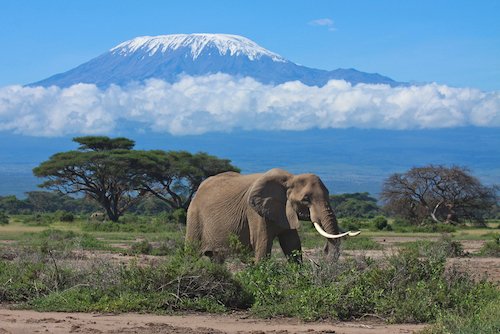 Tanzania
TanzaniaLike what you read?


